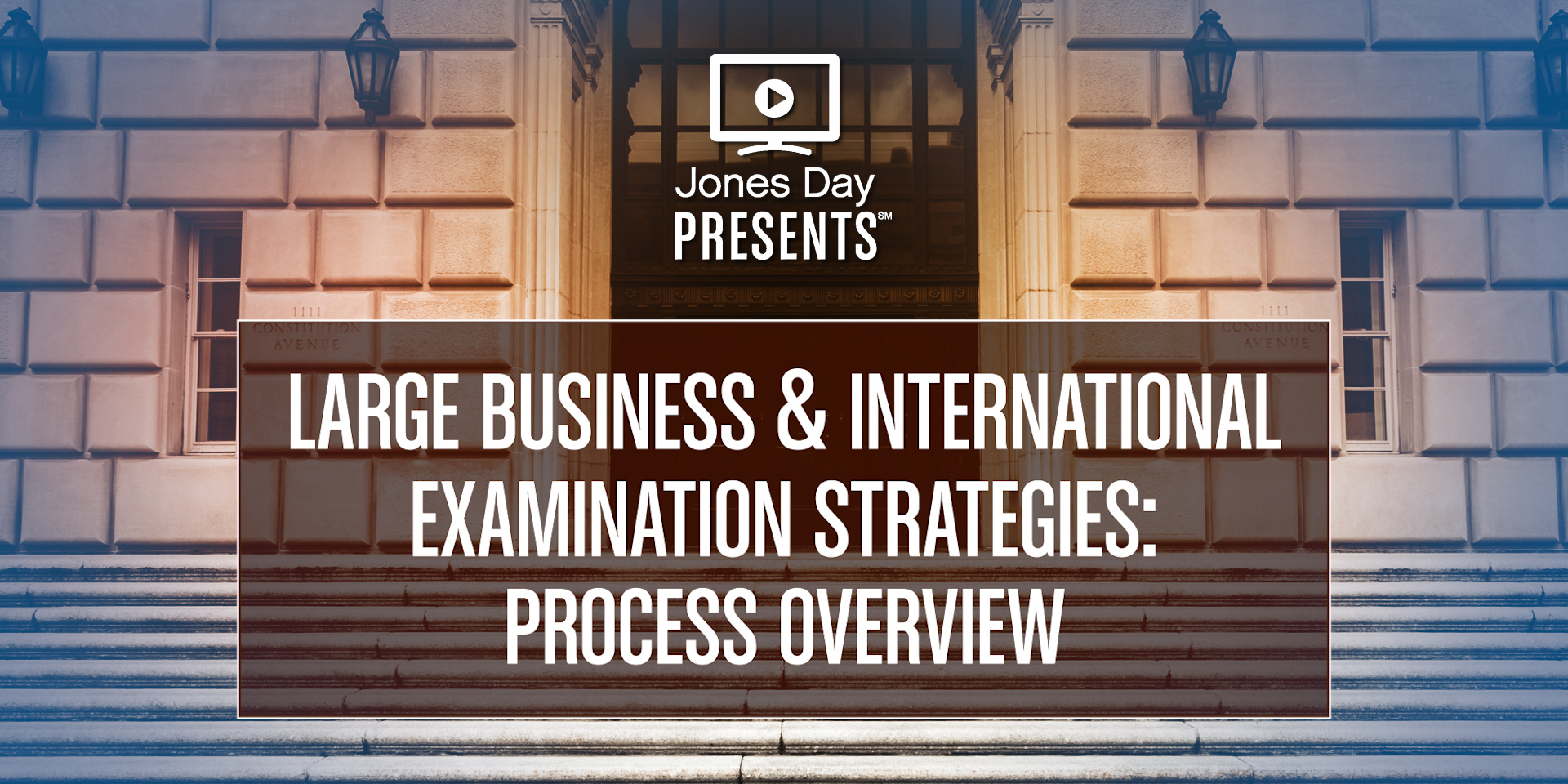
Jones Day Presents: LB&I Examination Strategies: Process Overview
In 2016, the IRS's Large Business & International (LB&I) Division significantly altered its examination processes. In the first in a series of programs on LB&I strategies, Jones Day partner and tax litigator Chuck Hodges explains what companies need to know about the five most critical changes to the Division's examination procedures.
Read the full transcript below:
Chuck Hodges:
In 2016, the IRS Large Business & International Division or LB&I who deal with the largest taxpayers in the world, they changed their exam process and how they changed it was through what I refer to about five critical changes on how they are going to conduct exams of these large taxpayers. And I'd like to discuss those five now.
Chuck Hodges:
The first one is they're going to more of an issue-based approach versus just an overview of the entire return. And so where that's going to be extremely helpful is that the taxpayer is going to know what issues that the IRS is really focusing on and it'll save a lot of time and money because there's not going to be any kitchen sink IDRs or information document requests. And that's a very helpful thing for taxpayers and the IRS from a time and cost standpoint.
Chuck Hodges:
The second change is in the information document request process, and there the IDR process has changed. Before you got an IDR from the IRS, they asked a lot of questions, you didn't always know where they're going. But now since they're on an issue-based approach, now they're reaching out to the taxpayer ahead of time before issuing the IDR to simply ask some questions about the issue they're looking into and they're discussing it with the taxpayer to see what does the taxpayer have that will be responsive to this issue-based IDR. And so then that will help craft how the IDR is worded. So again, unlike in the past, the taxpayer's actually involved with the IDR.
Chuck Hodges:
The third change is one that I'm hoping is going to become more utilized by both parties because it's not to where I would like it yet and that is both parties are to be more transparent. How does that work? If you're the taxpayer you're supposed to be more transparent about, "Hey, here are the issues that you're looking at. Here are the documents that we have." But the exam process specifically says that the IRS also has to be more transparent. So you should not have a situation where a taxpayer all of a sudden gets this final notice from the IRS where they're challenging an adjustment on a tax return and the taxpayer never saw it coming. So again, both parties are supposed to be more transparent.
Chuck Hodges:
The fourth one is a procedural issue that you got to make sure you're aware of. Once you get under audit, you may look at your own return and look at your own business records and decide, "Wait, I may be entitled to a refund." And so you want to tell the IRS, "Hey, I understated my business deductions. And by doing that, I'm entitled to a refund." To avoid having to go through the whole formal process of asking for a refund, you've got to make sure to submit this informal claim to the exam team within 30 days after that opening conference with the LB&I examed group.
Chuck Hodges:
The fifth one is one that I think is very underrated, and we're going to talk about it later in a later video, which is the acknowledgement of facts IDR. This is something new. This is where, at the end of an audit, the two parties realize that there's an unagreed issue and it's going to go to appeals. You want to come together and have an actual list of facts and documents that both parties agree that are relevant and also undisputed because then that just simply minimizes the number of issues that appeals has to resolve at the next level. So as you see, the LB&I exam process has really changed and our largest taxpayers need to be aware of these changes and change their own processes so they can take advantage of any of the opportunities that exist under this new process.


